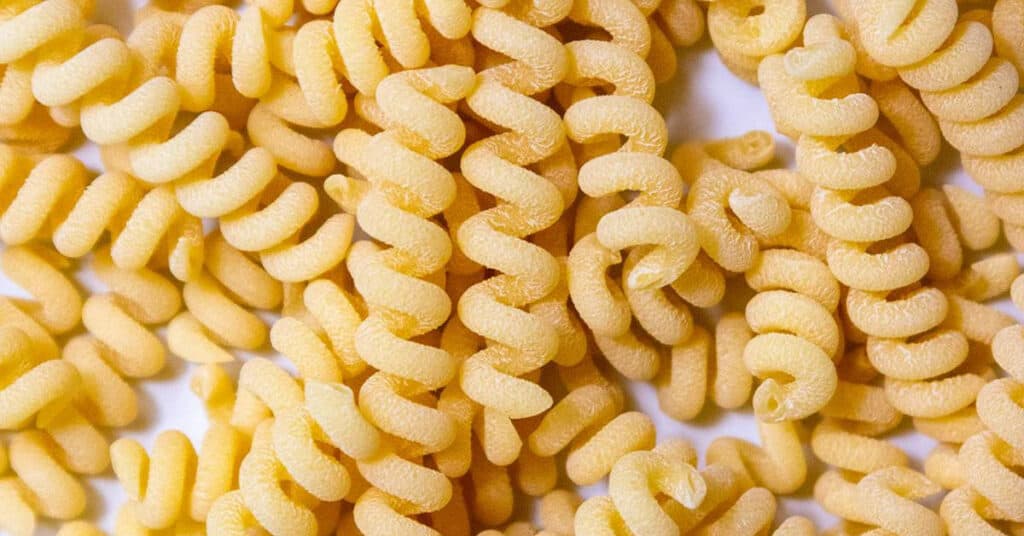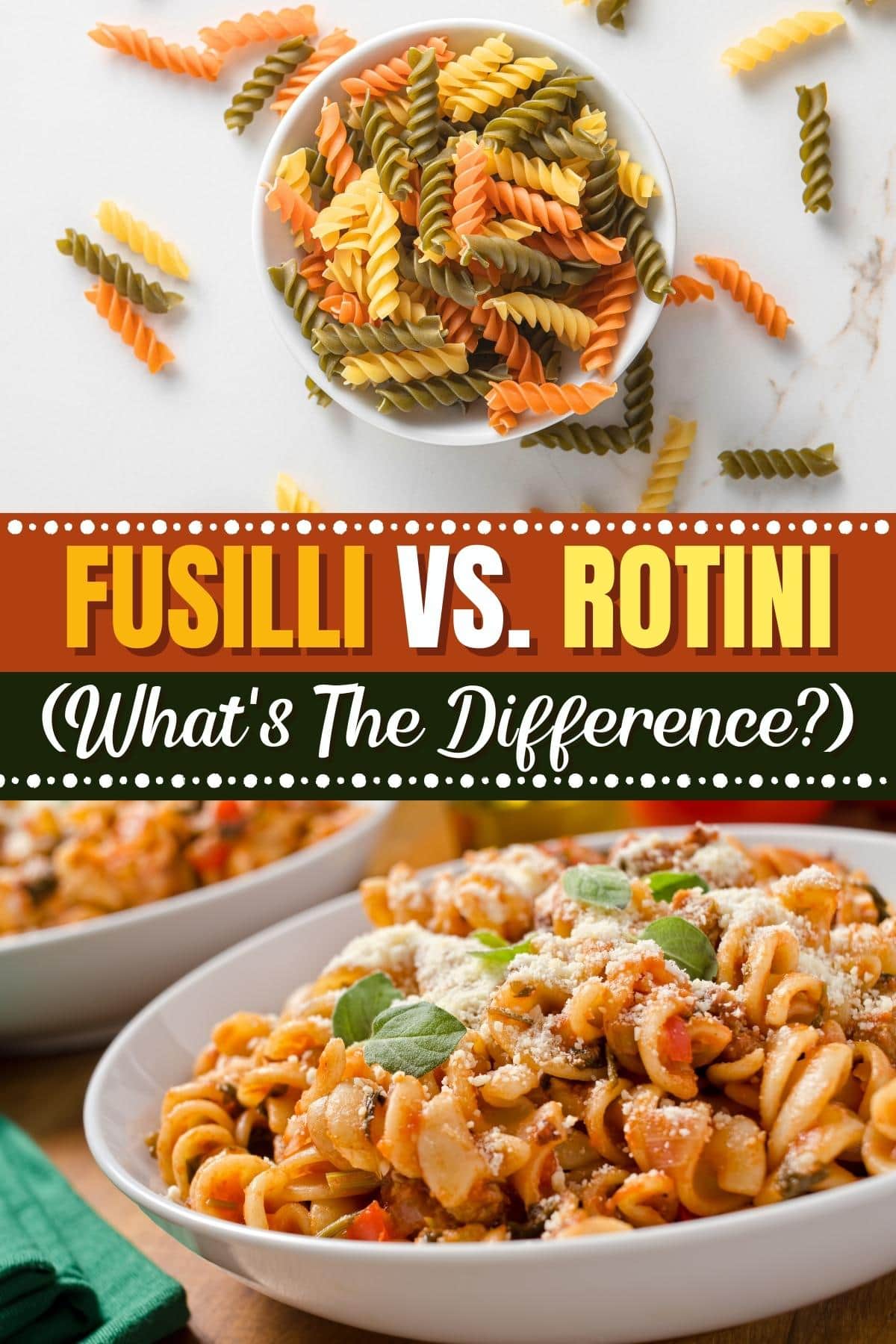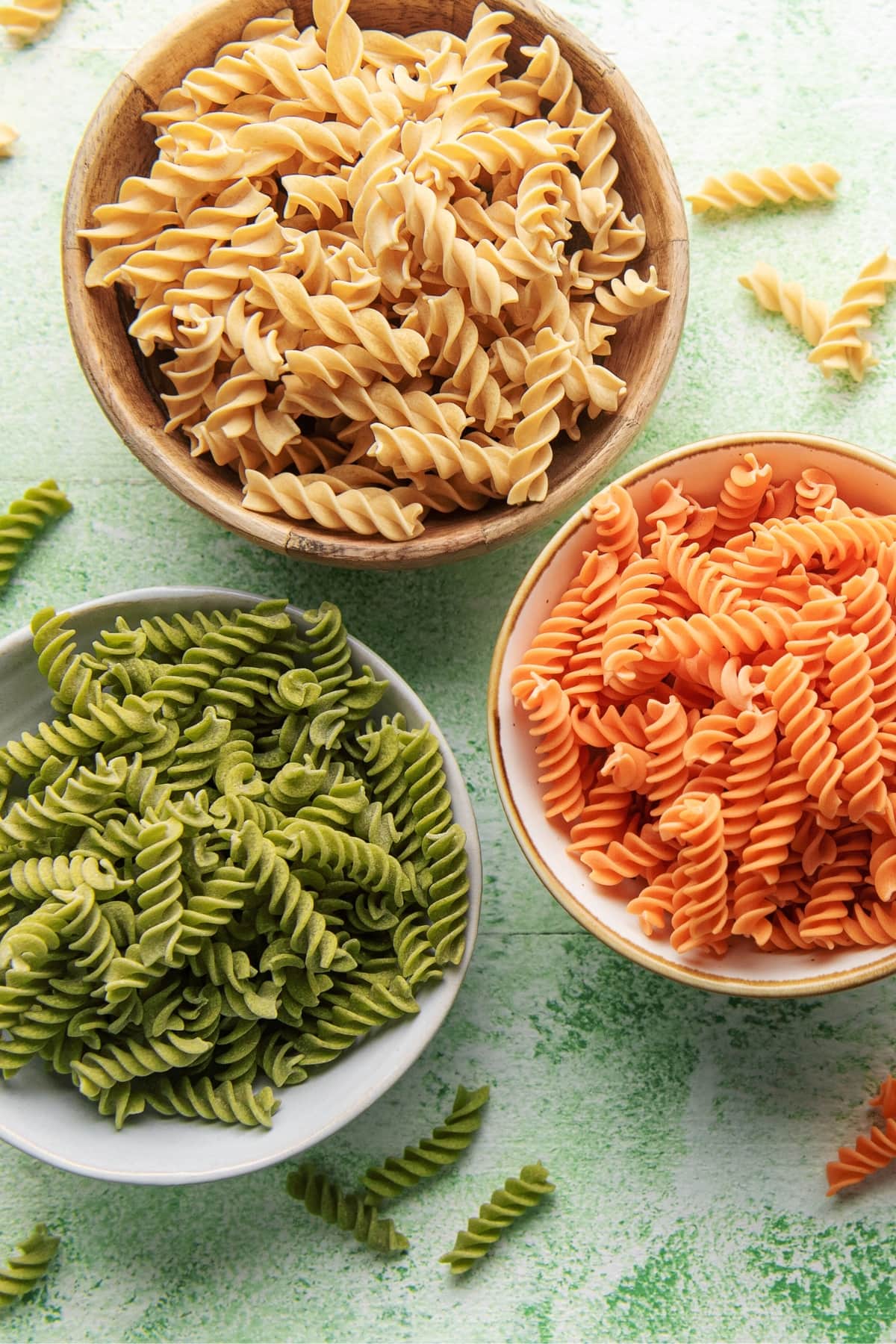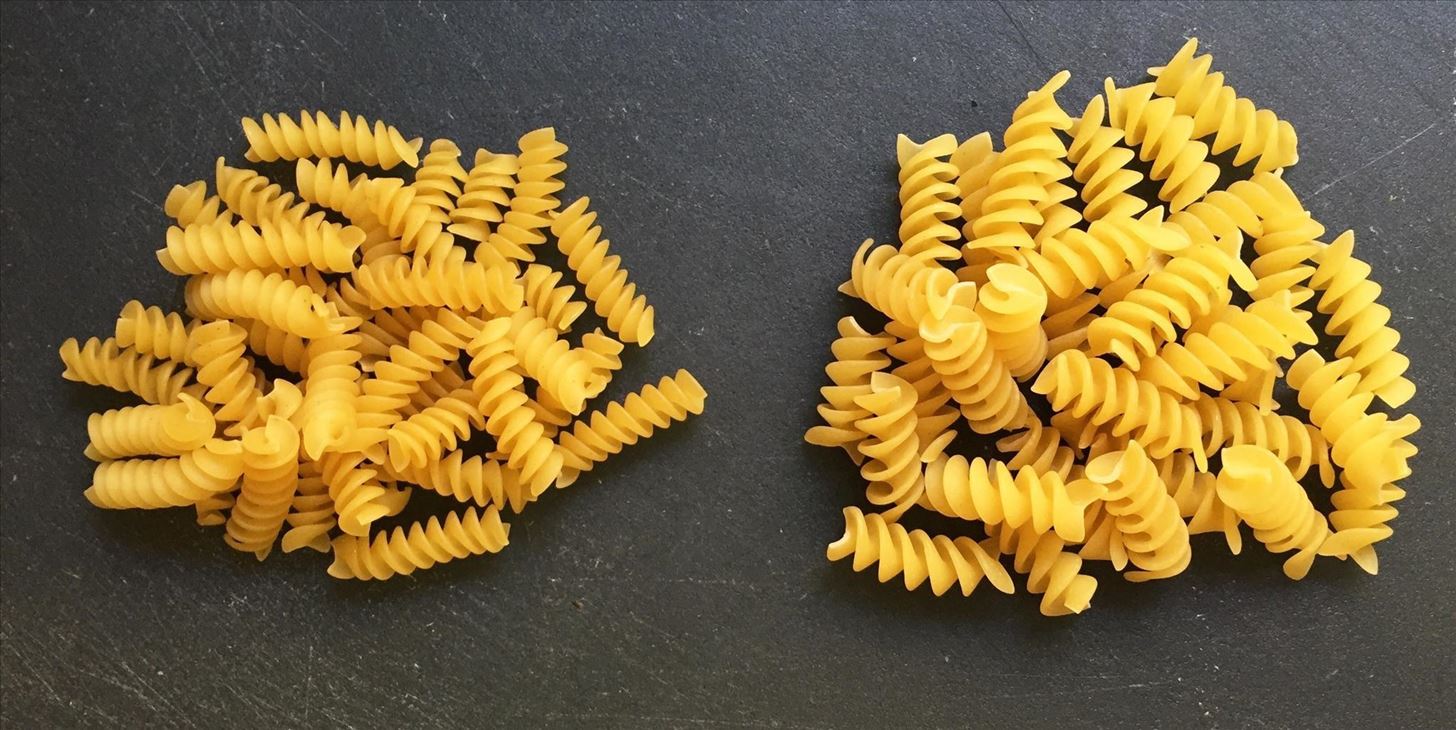Fusilli Pasta Overview

Fusilli pasta is a popular spiral-shaped pasta that is loved for its unique texture and versatility in cooking. It is made from flat strands of pasta that are twisted into curly, spring-like shapes. The twisted shape of fusilli helps it hold onto sauces, making it ideal for dishes with thicker sauces. This pasta is also great for adding a visually appealing element to your meals. Whether you’re making a creamy pasta dish or a light summer salad, fusilli pasta is sure to add a delightful twist to your culinary creations.
Fusilli Pasta: Shape And Texture
Fusilli pasta is known for its distinctive shape and texture. It features a spiral shape with a wide and open form, making it perfect for holding onto sauces and dressings. The twists and turns of fusilli create crevices that allow the sauce to cling to every inch of the pasta, ensuring a burst of flavor in every bite. The firm and springy texture of fusilli adds a delightful chewiness to the dish, enhancing the overall dining experience. Whether you’re enjoying it in a creamy Alfredo sauce or a zesty tomato-based dish, fusilli pasta promises a satisfying and enjoyable meal.
Fusilli Pasta: Cooking Methods And Versatility
Fusilli pasta is extremely versatile when it comes to cooking methods. It can be boiled in salted water until al dente, which usually takes around 9-11 minutes. This pasta can also be used in pasta salads, baked casseroles, or stir-fried dishes. The spiral shape of fusilli allows it to hold onto sauces and ingredients, making it ideal for both hearty and light dishes. It can be paired with various sauces such as creamy Alfredo, zesty tomato, or pesto. Its versatility and ability to absorb flavors make fusilli a great option for any pasta lover.
Rotini Pasta Overview

Rotini pasta is a popular type of spiral-shaped pasta that originates from Italy. It is characterized by its unique twisted shape, which resembles a corkscrew or a helix. The name “rotini” actually derives from the Italian word for “twists.” This pasta is versatile and holds sauces and ingredients well due to its ridged texture. It is often used in pasta salads, baked dishes, and stir-fries. Rotini pasta is loved for its ability to capture and distribute flavors evenly, making it a favorite choice for many pasta enthusiasts.
Rotini Pasta: Appearance And Taste
Rotini pasta is instantly recognizable for its unique spiral shape, resembling a corkscrew or helix. The tightly coiled spirals give rotini pasta a visually appealing and whimsical appearance. In terms of taste, rotini pasta has a slightly chewy texture and a mild flavor that pairs well with a wide range of sauces and ingredients. The ridges on the surface of rotini pasta help to hold onto sauces and enhance the overall eating experience. Whether served hot or cold, rotini pasta adds a delightful twist to any dish.
Rotini Pasta: Best Recipes And Pairings
Rotini pasta’s unique spiral shape makes it perfect for capturing and holding onto sauces and ingredients. It can be used in a variety of delicious recipes and paired with a range of flavors. One popular recipe is Rotini with Tomato and Basil, where the pasta is cooked al dente and tossed with a fresh tomato and basil sauce. Another option is Rotini with Pesto and Vegetables, combining the pasta with a vibrant pesto sauce and sautéed vegetables. Rotini also works well in pasta salads, adding texture and visual appeal. Pair it with creamy sauces, vegetables, or meats for a satisfying and versatile dish.
Fusilli Pasta Nutrition

Fusilli pasta is not only delicious but also provides some nutritional benefits. A one-cup (cooked) serving of fusilli pasta contains approximately 200-220 calories, making it a moderate-calorie option. It is primarily made from semolina flour, which is a good source of carbohydrates and provides energy to the body. Fusilli pasta also contains small amounts of protein and dietary fiber. However, it is important to note that the nutritional content may vary depending on the brand and cooking method. For a healthier option, consider choosing whole wheat or whole grain fusilli pasta, which provides more fiber and nutrients.
Fusilli Pasta: Calories And Macronutrients
A one-cup (cooked) serving of fusilli pasta contains approximately 200-220 calories, making it a moderate-calorie option. It is primarily made from semolina flour, which is a good source of carbohydrates and provides energy to the body. Fusilli pasta also contains small amounts of protein and dietary fiber. However, it is important to note that the nutritional content may vary depending on the brand and cooking method. For a healthier option, consider choosing whole wheat or whole grain fusilli pasta, which provides more fiber and nutrients.
Fusilli Pasta: Health Benefits And Considerations
Fusilli pasta offers a few health benefits and considerations to keep in mind. First, as a good source of carbohydrates, it provides sustained energy and can be part of a balanced diet. Additionally, its moderate calorie content makes it suitable for those watching their weight. However, it is important to note that fusilli pasta is low in protein and dietary fiber, so it may not be as filling or satisfying as other pasta types. Consider incorporating protein-rich ingredients and veggies into your dish to make it more nutritious.
Rotini Pasta Nutrition

Rotini pasta is a versatile and delicious option that offers some nutritional benefits. It is a good source of carbohydrates, providing sustained energy. However, rotini pasta is relatively low in protein and dietary fiber, which are important for maintaining satiety and promoting healthy digestion. It is also important to note that the nutritional content of rotini pasta can vary depending on the brand and preparation method. Consider incorporating protein-rich ingredients, such as lean meats or legumes, and adding vegetables to your rotini pasta dishes to boost its nutritional value.
Rotini Pasta: Nutritional Content Breakdown
Rotini pasta is a delicious choice that offers some nutritional benefits. In terms of its macronutrients, a 2-ounce (56g) serving of dry rotini pasta typically contains around 200 calories, 42 grams of carbohydrates, 2 grams of protein, and very little fat. However, it can vary depending on the brand and preparation method. Rotini pasta is a good source of energy due to its carbohydrate content, but it is relatively low in protein and dietary fiber compared to other pasta types. Adding protein-rich ingredients and vegetables can help boost the nutritional value of your rotini pasta dishes.
Rotini Pasta: Comparison With Other Pasta Types
When comparing Rotini pasta to other pasta types, it is important to consider its unique shape and texture. Unlike long and thin pasta varieties like spaghetti or linguine, Rotini’s spiral shape allows it to hold onto sauces and dressings, making it perfect for dishes like pasta salads or baked pasta casseroles. Additionally, Rotini’s ridges and twists provide a nice bite and help to catch and hold onto chunky sauces. Overall, Rotini stands out among other pasta types for its versatility and ability to hold up well in a variety of recipes.
Cooking With Fusilli And Rotini

When it comes to cooking with Fusilli and Rotini pasta, both varieties are incredibly versatile and can be used in a wide range of dishes. They are perfect for hot pasta dishes like creamy carbonara or cheesy pasta bakes, as their spiral shape and grooves allow them to hold onto sauces and enhance the overall flavor. Additionally, Fusilli and Rotini work well in cold pasta salads, as their unique shapes add visual interest and their texture provides a satisfying bite. Whether you’re cooking Fusilli or Rotini, these spiral pastas are sure to elevate any meal.
Fusilli Vs Rotini: Cooking Time And Methods
Fusilli and Rotini pasta have similar cooking times and methods. Both varieties require boiling in salted water until they are al dente, which typically takes about 8-10 minutes. It’s important not to overcook them to maintain their desired texture. When cooking, stir occasionally to prevent the pasta from sticking together. Once cooked, drain the pasta and rinse with cold water to stop the cooking process. Fusilli and Rotini can then be used in a variety of recipes, from saucy pasta dishes to refreshing pasta salads.
Fusilli Vs Rotini: Sauces And Accompaniments
Fusilli and Rotini pasta are both versatile options when it comes to pairing them with sauces and accompaniments. The corkscrew shape of Fusilli pasta makes it perfect for catching and holding onto chunky sauces, such as Bolognese or marinara. It also works well in creamy sauces like Alfredo or carbonara. On the other hand, Rotini pasta’s tighter helix shape allows it to hold sauces evenly throughout, making it a great choice for lighter sauces like pesto or tomato-based sauces. Both types of pasta can also be used in cold pasta salads with a variety of vegetables, meats, and dressings.
Conclusion

In conclusion, both Fusilli and Rotini pasta have their own unique characteristics that make them a delicious addition to any meal. The corkscrew shape of Fusilli allows it to hold onto chunky sauces, while Rotini’s tight helix shape evenly distributes lighter sauces. Both types of pasta are versatile and can be used in a variety of recipes and accompaniments. Whether you prefer the spiral design of Fusilli or the spring-like shape of Rotini, you can’t go wrong with either choice. Experiment with different sauces and ingredients to find your perfect pasta dish!
Fusilli Vs Rotini: Final Thoughts And Recommendations
In conclusion, both Fusilli and Rotini pasta have their own unique characteristics that make them a delicious addition to any meal. The corkscrew shape of Fusilli allows it to hold onto chunky sauces, while Rotini’s tight helix shape evenly distributes lighter sauces. Both types of pasta are versatile and can be used in a variety of recipes and accompaniments. Whether you prefer the spiral design of Fusilli or the spring-like shape of Rotini, you can’t go wrong with either choice. Experiment with different sauces and ingredients to find your perfect pasta dish!
FAQ About Fusilli Vs Rotini Pasta: Spiral Pasta Showdown
Q: What is the main difference between fusilli and rotini pasta?
A: Fusilli is a long, spiral-shaped pasta, while rotini is a short, corkscrew-shaped pasta.
Q: Which pasta is better for holding sauces?
A: Both fusilli and rotini are great for holding sauces due to their spiral shapes that allow them to trap sauces effectively.
Q: Can fusilli and rotini be used interchangeably in recipes?
A: Yes, fusilli and rotini can generally be used interchangeably in recipes that call for spiral-shaped pasta.
Q: Are there any differences in texture between fusilli and rotini?
A: Fusilli pasta tends to have a slightly denser texture compared to rotini, which is lighter and more delicate.
Q: How should fusilli and rotini be cooked to perfection?
A: Both fusilli and rotini pasta should be cooked in boiling salted water until al dente, following the instructions on the package for cooking times.
Q: Do fusilli and rotini pair better with specific sauces or dishes?
A: Fusilli is excellent for creamy sauces or baked dishes, while rotini works well with chunky tomato-based sauces or in pasta salads.
Q: Are fusilli and rotini pasta shapes traditional in Italian cuisine?
A: Yes, both fusilli and rotini are traditional pasta shapes that are commonly used in various Italian pasta dishes.

Panda Cafe offers delicious dining and takeout to Fairfax, VA.
Panda Cafe is a cornerstone in the Fairfax community and has been recognized for its outstanding Chinese cuisine, excellent service, and friendly staff.